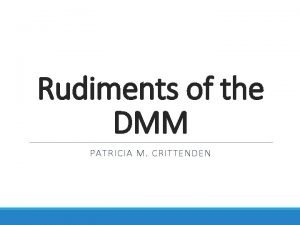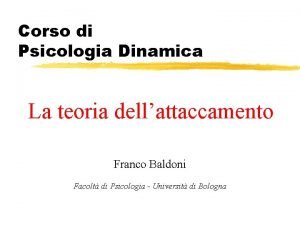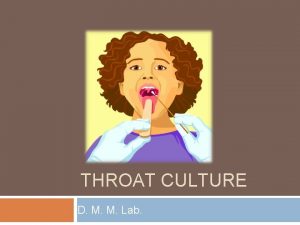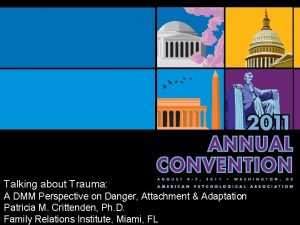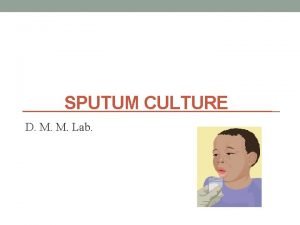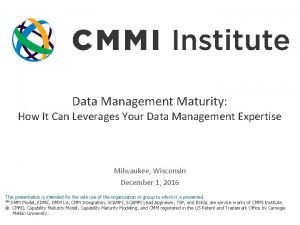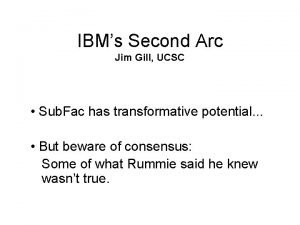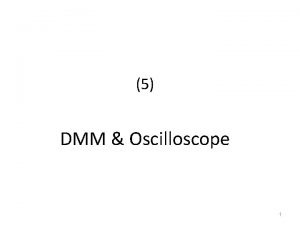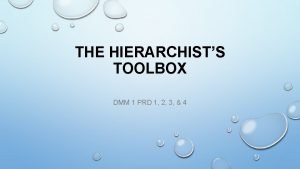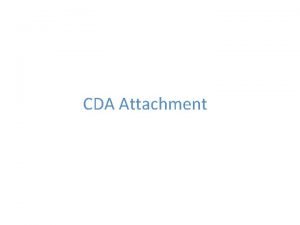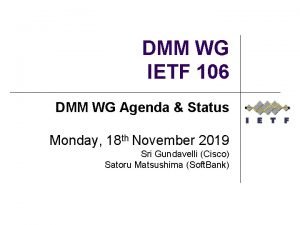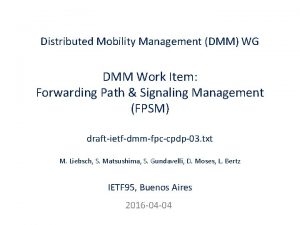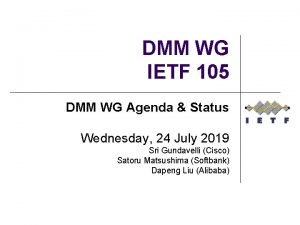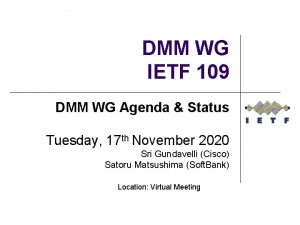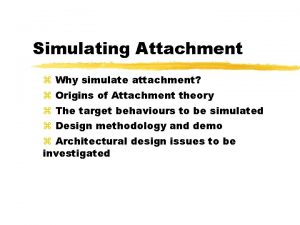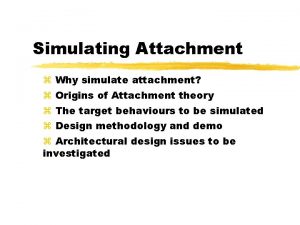Rudiments of the DMM PATRICIA M CRITTENDEN Attachment











- Slides: 11

Rudiments of the DMM PATRICIA M. CRITTENDEN

Attachment Theory • Attachment functions to promote survival by protecting and comforting the person when there is danger. • To organize a protective strategy, the brain needs information. • There are 3 kinds of information: somatic, cognitive, & affective. • The infant learns the meaning of these from the parent. • Not all information predicts what it appears to predict, i. e. , information must be transformed to predict accurately. • Infant brains use simple information for simple strategies. • More mature brains transform information in more ways to make better predictions & organize more protective behavior.

Individual differences in attachment • Ainsworth’s ABC patterns. • Self protective strategies. • Developmental change in the possible strategies a child could organize. • Parents who differ in their ability to protect and comfort children. • Parents who differ in the meanings they assign to information. • Adaptation to contexts that vary in the severity and type of danger.

DMM versus Disorganization - INFANCY DMM AINSWORTH ABC+D A 1 -2 B 1 -4 C 1 -2 D .

DMM versus Disorganization - PRESCHOOL DMM AINSWORTH ABC+D A 1 -2 B 1 -4 C 1 -2 D/ Controlling .

DMM versus Disorganization – SCHOOL YEARS DMM AINSWORTH ABC+D A 1 -2 B 1 -4 C 1 -2 D/ Controlling .

DMM versus Disorganization - ADOLESCENCE DMM AINSWORTH ABC+D A 1 -2 Ds 1 -4 F 1 -5 E 1 -3 U/ Cannot Classify .

DMM versus Disorganization - ADULT DMM AINSWORTH ABC+D A 1 -2 Ds 1 -4 F 1 -5 E 1 -3 U/ Cannot Classify .



Two Dimensions of Individual Differences in Attachment Source of T r a n s f o r Information m a t i o n s
